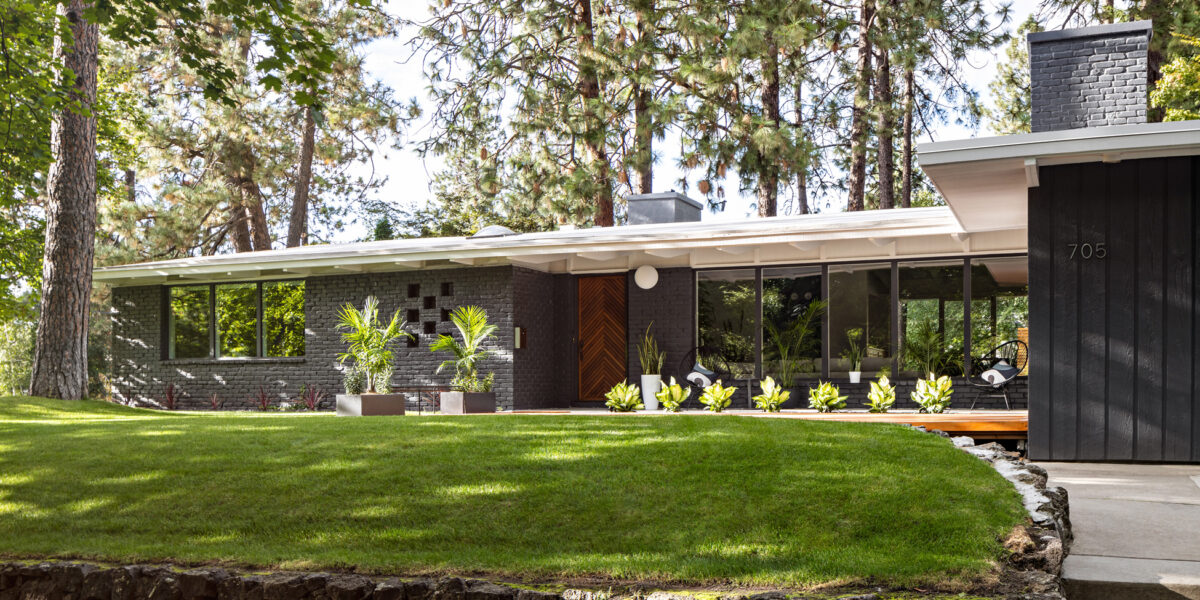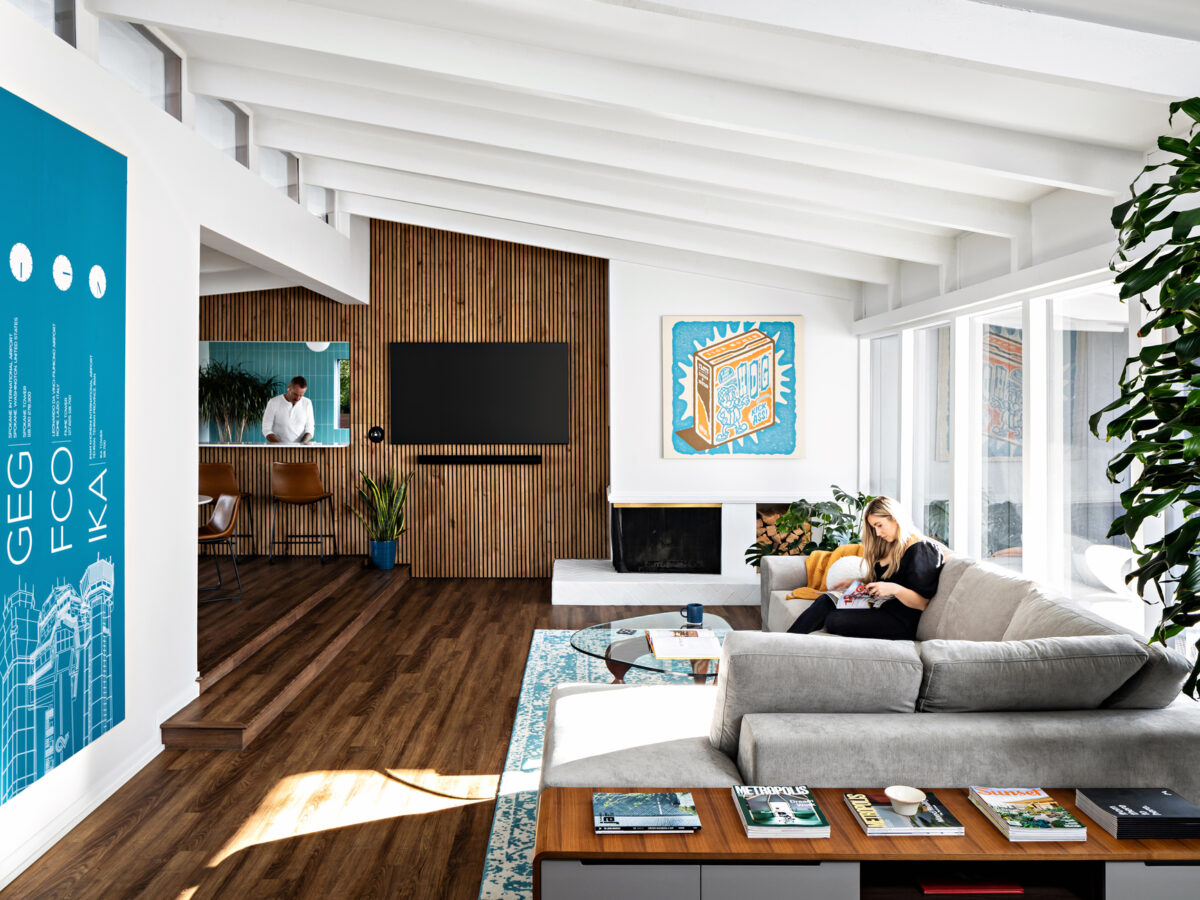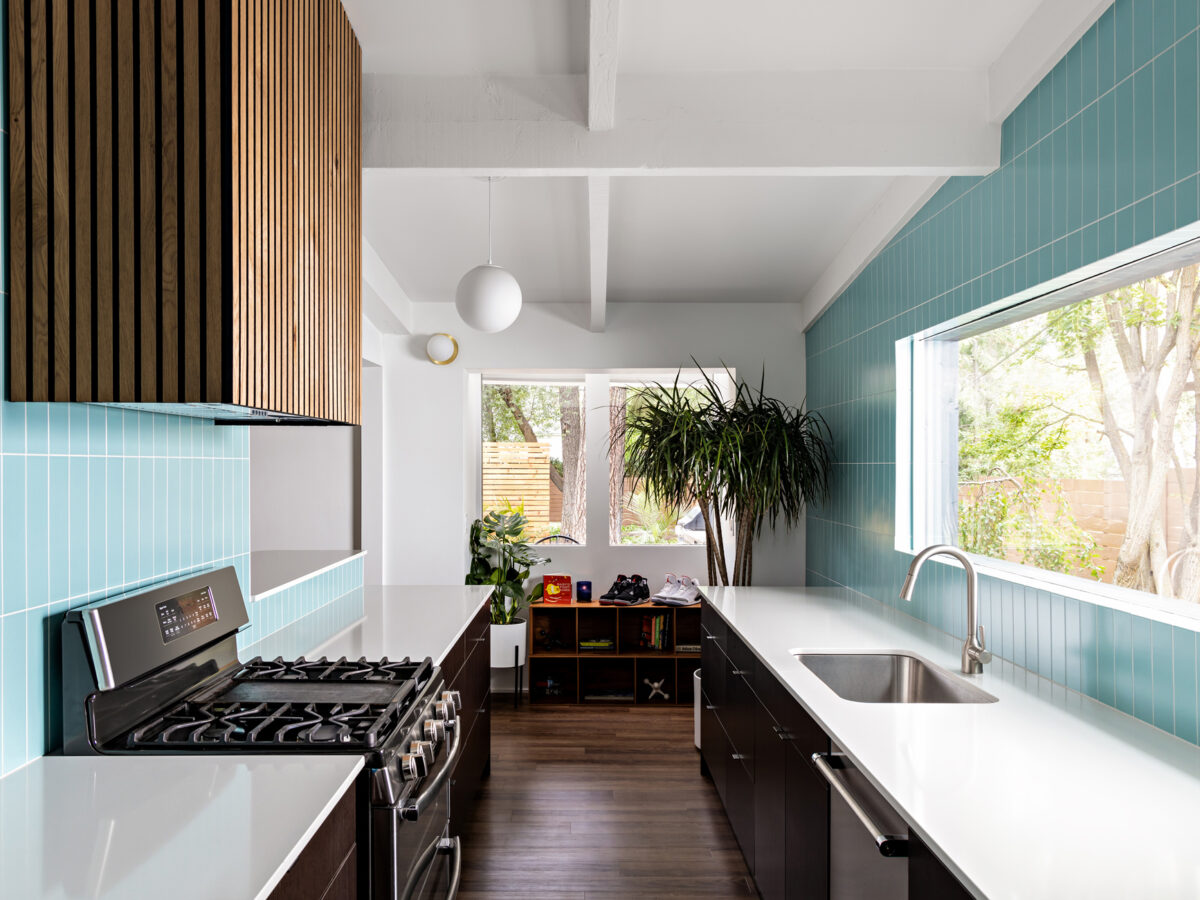
Tour This Kid-Friendly Bachelor Pad That Appeared in Sunset in the ’70s
Serial remodeler and architect Josh Hissong is beautifying his Spokane neighborhood, one mid-century ranch house at a time.

It takes a certain kind of person to buy a vintage house sight-unseen, to dive headfirst into the rough waters of reviving a property’s faded glory without even opening the front door.
Josh Hissong, the Spokane-based principal of HDG, is that guy.

Patrick Martinez
“I’m a bit nomadic. I’ve renovated and sold 10 or 11 houses, which is why I’m single,” says Hissong with a laugh. “No, that’s not true! That’s not the reason. I’m sure I have other faults. I just love taking things that were once beautiful but forgotten and making them beautiful again.”
Hissong founded his design firm back in 2010, after he was laid off from a previous job, and took a scrappy approach to establishing a name for himself. He and his partner, Armando Hurtado, renovated drive-through coffee stands, small commercial properties, modest residential projects, and really “anything that would come our way.” Steadily, they built a design portfolio that spread from Spokane to a wider swath of the Pacific Northwest.
“Now we do $30 million houses and work in 12 states,” he says.

Patrick Martinez
HDG is hired to build sprawling vacation homes from the ground up in exclusive enclaves like Gozzer Ranch in Idaho, but Hissong’s sweet spot, or at least his pride and joy, is the smaller-scale remodels of modern homes that showcase clean lines and clever use of smart materials. In 2019, one of those homes Hissong bought on blind faith and then restored ended up on the cover of a popular modern design magazine. It was clear from the beginning that Hissong had tapped into something interesting.
“Lately, there’s a huge upswing in people looking for these homes. When I was in that house, I had 15 people in a single year knock on the door and say, “Name your price,’” he says. “Eventually, when I wanted to sell, I contacted four of those people on the list. And the fourth one took it.”

Patrick Martinez
Part of what makes his work in western Washington state so satisfying is that there is a surprisingly robust inventory of modern houses, many of which are in need of TLC. Spokanites have the modern architect Moritz Kundig to thank for creating that legacy. The Swiss-born and trained architect emigrated to Washington in the 1950s and brought his passion for European modernism with him. Over several decades, he designed and remodeled many of the homes that give the South Hill neighborhood its distinct mid-century charm, including Hissong’s current residence, featured here. Kundig’s son, Tom, is co-principal of Olson Kundig, the celebrated Seattle design firm that’s regularly listed among the world’s top firms.
“I didn’t realize that Moritz had designed the house I bought in 2019. And I didn’t know that he did the renovations in the 1970s for this one, which Sunset featured, until after I bought them,” says Hissong, who also notes that the house was surrounded by a fence and not visible from the street when he made an offer. “It was completely serendipitous. The previous owners left a manila envelope in my office with the two vintage magazines with stories about Moritz and the house.”

Patrick Martinez
Both Moritz and Tom Kundig are on Hissong’s shortlist of design heroes, and after he purchased the houses, the three architecture lovers forged a lasting friendship. Moritz lived in a retirement facility down the street from Hissong, who would visit him several times a month until he passed away earlier this year at the age of 98.
Because Hissong wanted to preserve the character of the house, his work was limited to refinishing surfaces, updating plumbing and electrical, replacing leaky windows with more efficient UV-blocking versions, installing efficient heating and cooling systems, and reviving the kitchen. The front door, which was featured in Sunset, had grayed significantly. But instead of replacing it, Hissong removed it from the hinges, sanded it, sealed it, and put it back. The yard was completely replanted with grass and a generous number of potted plants. All of the homes in the area were built on bedrock, and many have lava rock accents in their landscaping.
“The kitchen had been renovated in the 1970s, and the cabinets were untreated, so it looked like reclaimed wood,” he says. “I tore up all the carpet, redid flooring throughout, painted inside and out.”

Patrick Martinez
Aqua accents inside add to its crisp mid-century appeal. For the exterior, Hissong relied on a personal favorite, Deep Space from Benjamin Moore.
“It was one of the original paint colors that Joseph Eichler used,” says Hissong, referring to the real estate developer who created many of America’s most important modern residential neighborhoods. “I found it in one of the old Eichler catalogs, then used it on another house years ago. When I went to order the paint at the Benjamin Moore store, they’d never heard of it. Now, all summer long they sell that color here. The South Hill of Spokane is covered in this color.”

Patrick Martinez
Hissong’s favorite corner of the house is a small exterior sitting area Kundig designed around a built-in firepit. He took great care to restore it to its original, intended state.
“I tore out all of the rotted wood and built it back exactly how Moritz designed in the 1970s; even the light fixture is the same. I put up the screen as a visual barrier to create one little quaint area in an enormous backyard,” he says.

Patrick Martinez
The wide surrounding lawn, 6-foot overhangs along the perimeter of the house, and the low, single-story footprint create the illusion of much bigger proportions.
“This house is about 1,700 square feet, but it feels enormous and expansive in a great way,” he says. “The primary bedroom is 18 feet wide, and there’s glass all the way across the whole back side.”

Patrick Martinez
The elder Kundig was pleased with the way his vision for a modest, intentional, thoughtfully designed community has remained largely intact. “He was giddy that the home was being honored in Sunset again,” says Hissong.
Hissong wishes that all of his clients appreciated Kundig’s minimalism and restraint. “We push really hard on our clients to not overbuild,” he says. “Do you need 12 bedrooms? Why? Some listened to us and shrunk the size of the house. Others, well, they just keep expanding. There’s so much excess it can be disheartening. You’ve got to ask, ‘What do you really need?’”
We only recommend things we love. If you buy something through our site, we might earn a commission.
